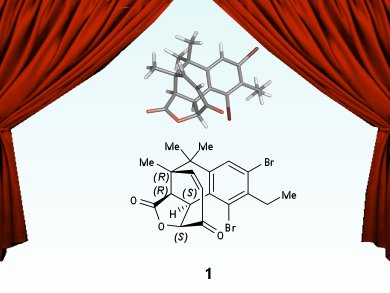Although terrestrial myxobacteria have been extensively studied and are known to produce a range of secondary metabolites with a remarkable variety of unusual structures, their marine counterparts have only recently been discovered.
Gabriele M. König and co-workers, University of Bonn, Germany, have isolated a marine myxobacterium from a mud sample from the coast of the island Prerow, Germany. Analysis showed that the bacterium was Enhygromyxa salina, which is closely related to microorganisms previously termed “unculturable”. As this bacterium was found to have persistent antibiotic activity towards gram-positive microorganisms, it was chosen for detailed investigation.
Large-scale cultivation allowed the isolation of salimabromide, the first natural product, a secondary metabolite, of the Plesiocystis/Enhygromyxa clade of marine myxobacterium. However, only minute amounts of the compound are produced. Analysis of the structure of salimabromide showed that it has a new tetracyclic carbon skeleton (pictured), comprising a brominated benzene ring, a furano lactone residue, and a cyclohexane ring bridged by a seven-membered cyclic moiety. Furthermore, it displayed antibiotic activity towards Arthrobacter cristallopoedes.
The study also illustrates that marine myxobacteria are phylogenetically distinct from other myxobacteria, which is mirrored in their biosynthetic abilities.
- Salimabromide: Unexpected Chemistry from the Obligate Marine Myxobacterium Enhygromxya Salina,
Stephan Felder, Sandra Dreisigacker, Stefan Kehraus, Edith Neu, Gabriele Bierbaum, Patrick R. Wright, Dirk Menche, Till F. Schäberle, Gabriele M. König,
Chem. Eur. J. 2013.
DOI: 10.1002/chem.201301379




